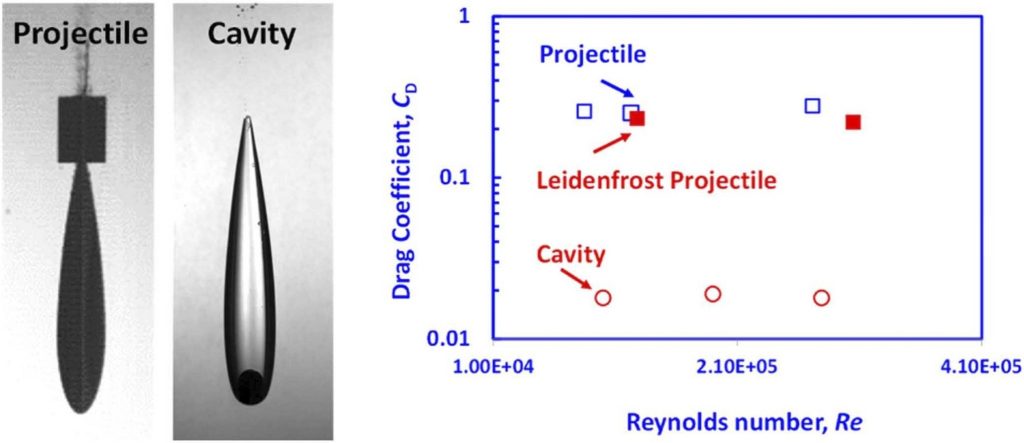Leidenfrost spheres, projectiles, and model boats: Assessing the drag reduction by superhydrophobic surfaces

Superhydrophobic surfaces are expected to reduce drag on bluff bodies moving in water due to the introduction
of a thin air layer around the solid and the resulting partial slip boundary condition. The use of Leidenfrost vapor
layers, sustained on the surface of a heated metal body is a reliable method to estimate the maximum drag
reduction possible due to such air layers. In the past such an approach was used to estimate the drag reduction on
a free-falling heated sphere, in which case the form drag is the lead component of the drag force. Here, we extend
this approach to evaluate the effect of the thin gas layers on the hydrodynamic drag of free-falling streamlined
projectiles and towed model boats, where the form drag is minimal, and the skin friction drag is the lead
component of the drag force. By comparing the drag for streamlined bodies with and without sustained airlayers, we see only incremental drag reductions, for the sub-critical Reynolds number tested herein. The same
is true for towed model boats. These results hold both for superhydrophobic surface treatments and Leidenfrost
vapor layers. Thus, we concluded that for the investigated range of sub-critical Reynolds numbers, the skin
friction drag is less sensitive to the effect of the thin gas layers compared to the form drag. These novel findings
have important implications for the practical potential of energy savings using gas layers sustained on super
hydrophobic surfaces.

